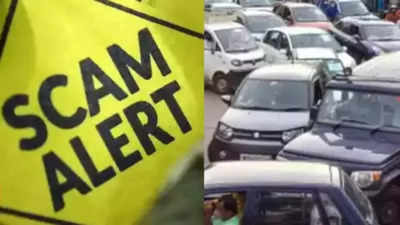Trending
E-Challan scams explained: How you're being targeted and how to stay safe
Scammers exploit hefty fines fear by sending unpaid traffic challan messages. Clicking scam links leads to fake government portals, risking malware and data theft. Verify details before paying, use local traffic authority sites with .gov.in domains, and report scams to authorities to prevent financial loss and protect others.

E-Challan scams explained: How you're being targeted and how to stay safe
Imagine receiving a text message saying that you have an unpaid traffic challan. The message sounds urgent, pushing you to make an immediate payment to avoid additional fees. In a state of panic, you might be tempted to click the link to see more details or proceed with the payment. However, before you act, take a pause. This could be an e-challan scam, a fraudulent scheme that has been used by scammers recently.
E-challan scams: How does it work
E-challan scams exploit drivers' fear of hefty fines. Scammers send messages that appear to be from traffic authorities, using official-sounding language and threats of substantial fines. These messages often contain a clickable link to a supposed payment portal, but clicking it can lead to serious trouble.
E-challan scams: How to stay safe
To protect yourself from e-challan scams, follow these essential tips: Verify the details before paying; genuine e-challans will list specific information like your vehicle registration number and the exact violation. If such details are missing, it’s probably a scam. Always use official channels by visiting the local traffic authority's website directly instead of clicking links in messages.
Legitimate Indian government websites typically use the ".gov.in" domain, so be cautious of different extensions or suspicious URLs. Lastly, report any suspected scams to the authorities to help prevent others from falling victim.
E-challan scams: How does it work
E-challan scams exploit drivers' fear of hefty fines. Scammers send messages that appear to be from traffic authorities, using official-sounding language and threats of substantial fines. These messages often contain a clickable link to a supposed payment portal, but clicking it can lead to serious trouble.
Conquering the Himalayas with the Volkswagen Virtus, Taigun | Volkswagen Experiences
The link in the message can lead you to a fake website designed to look like an official government portal. Entering your personal details, such as credit card information or login credentials, on this site results in your data being stolen or financial losses. Additionally, clicking the link might download malware onto your device, which can then steal your data, monitor your activity, or even take control of your device.
E-challan scams: How to stay safe
To protect yourself from e-challan scams, follow these essential tips: Verify the details before paying; genuine e-challans will list specific information like your vehicle registration number and the exact violation. If such details are missing, it’s probably a scam. Always use official channels by visiting the local traffic authority's website directly instead of clicking links in messages.
Legitimate Indian government websites typically use the ".gov.in" domain, so be cautious of different extensions or suspicious URLs. Lastly, report any suspected scams to the authorities to help prevent others from falling victim.
End of Article
FOLLOW US ON SOCIAL MEDIA









